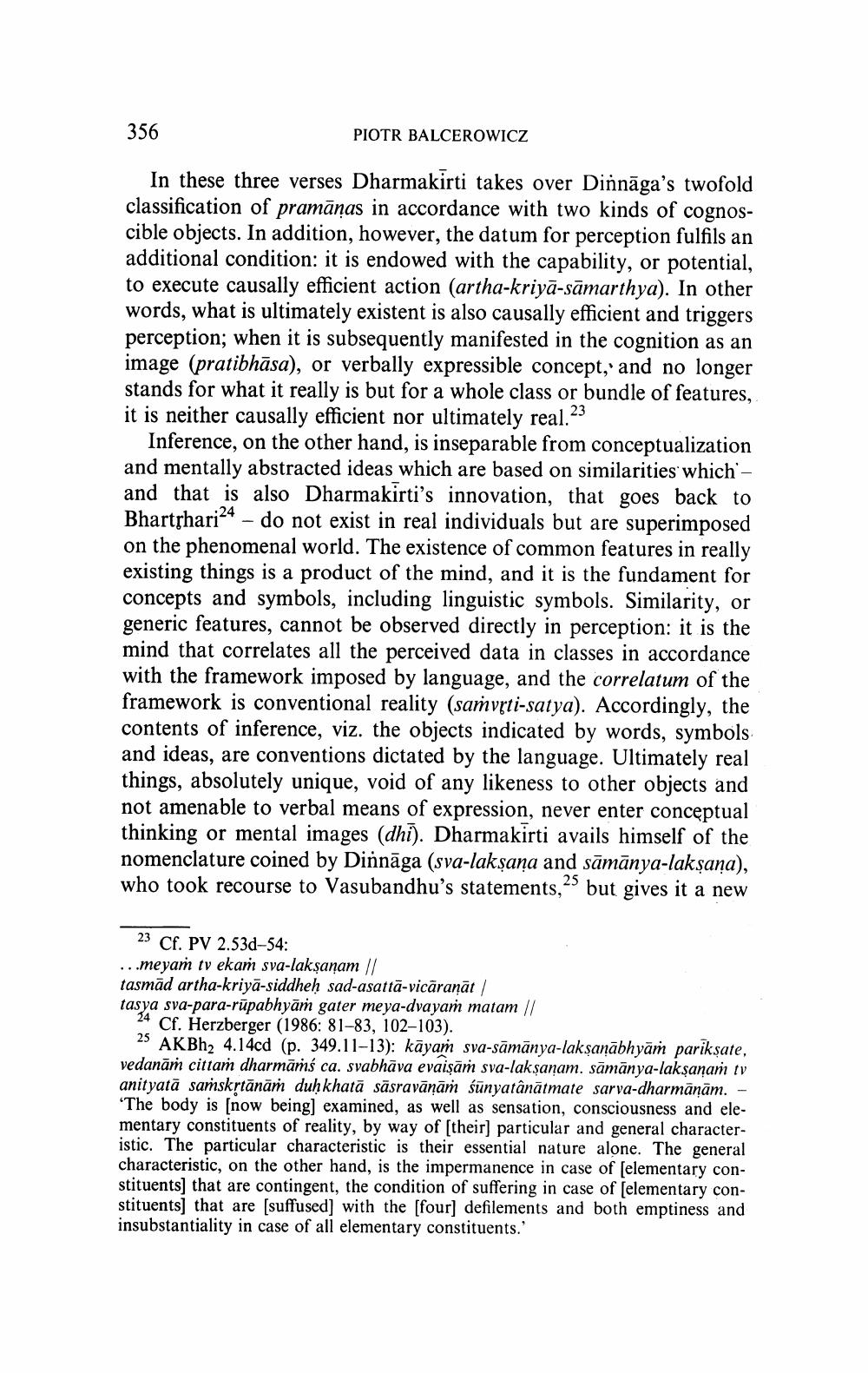________________
356
PIOTR BALCEROWICZ
In these three verses Dharmakirti takes over Dinnāga's twofold classification of pramānas in accordance with two kinds of cognoscible objects. In addition, however, the datum for perception fulfils an additional condition: it is endowed with the capability, or potential, to execute causally efficient action (artha-kriya-samarthya). In other words, what is ultimately existent is also causally efficient and triggers perception; when it is subsequently manifested in the cognition as an image (pratibhāsa), or verbally expressible concept, and no longer stands for what it really is but for a whole class or bundle of features, it is neither causally efficient nor ultimately real.25
Inference, on the other hand, is inseparable from conceptualization and mentally abstracted ideas which are based on similarities which - and that is also Dharmakirti's innovation, that goes back to Bhartshari" - do not exist in real individuals but are superimposed on the phenomenal world. The existence of common features in really existing things is a product of the mind, and it is the fundament for concepts and symbols, including linguistic symbols. Similarity, or generic features, cannot be observed directly in perception: it is the mind that correlates all the perceived data in classes in accordance with the framework imposed by language, and the correlatum of the framework is conventional reality (samvrti-satya). Accordingly, the contents of inference, viz. the objects indicated by words, symbols and ideas, are conventions dictated by the language. Ultimately real things, absolutely unique, void of any likeness to other objects and not amenable to verbal means of expression, never enter conceptual thinking or mental images (dhi). Dharmakirti avails himself of the nomenclature coined by Dinnāga (sva-lakṣaṇa and sāmānya-lakṣaṇa), who took recourse to Vasubandhu's statements, 25 but gives it a new
23 Cf. PV 2.53d-54: ...meyam tv ekaṁ sva-laksanam // tasmād artha-kriyā-siddheḥ sad-asattā-vicāraṇāt / tasya sva-para-rūpabhyāṁ gater meya-dvayam matam //
24 Cf. Herzberger (1986: 81-83, 102-103).
28 AKBh2 4.14cd (p. 349.11-13): kāyam sva-sāmānya-laksanābhyām pariksate, vedanāṁ cittam dharmāṁś ca. svabhāva evaişām sva-laksanam. sāmānya-laksanam tv anityatā saņskrtānāṁ duḥkhatā sāsravānāṁ śünyatânātmate sarva-dharmānām. - *The body is (now being] examined, as well as sensation, consciousness and elementary constituents of reality, by way of (their) particular and general characteristic. The particular characteristic is their essential nature alone. The general characteristic, on the other hand, is the impermanence in case of (elementary constituents) that are contingent, the condition of suffering in case of (elementary constituents) that are (suffused) with the [four] defilements and both emptiness and insubstantiality in case of all elementary constituents.




